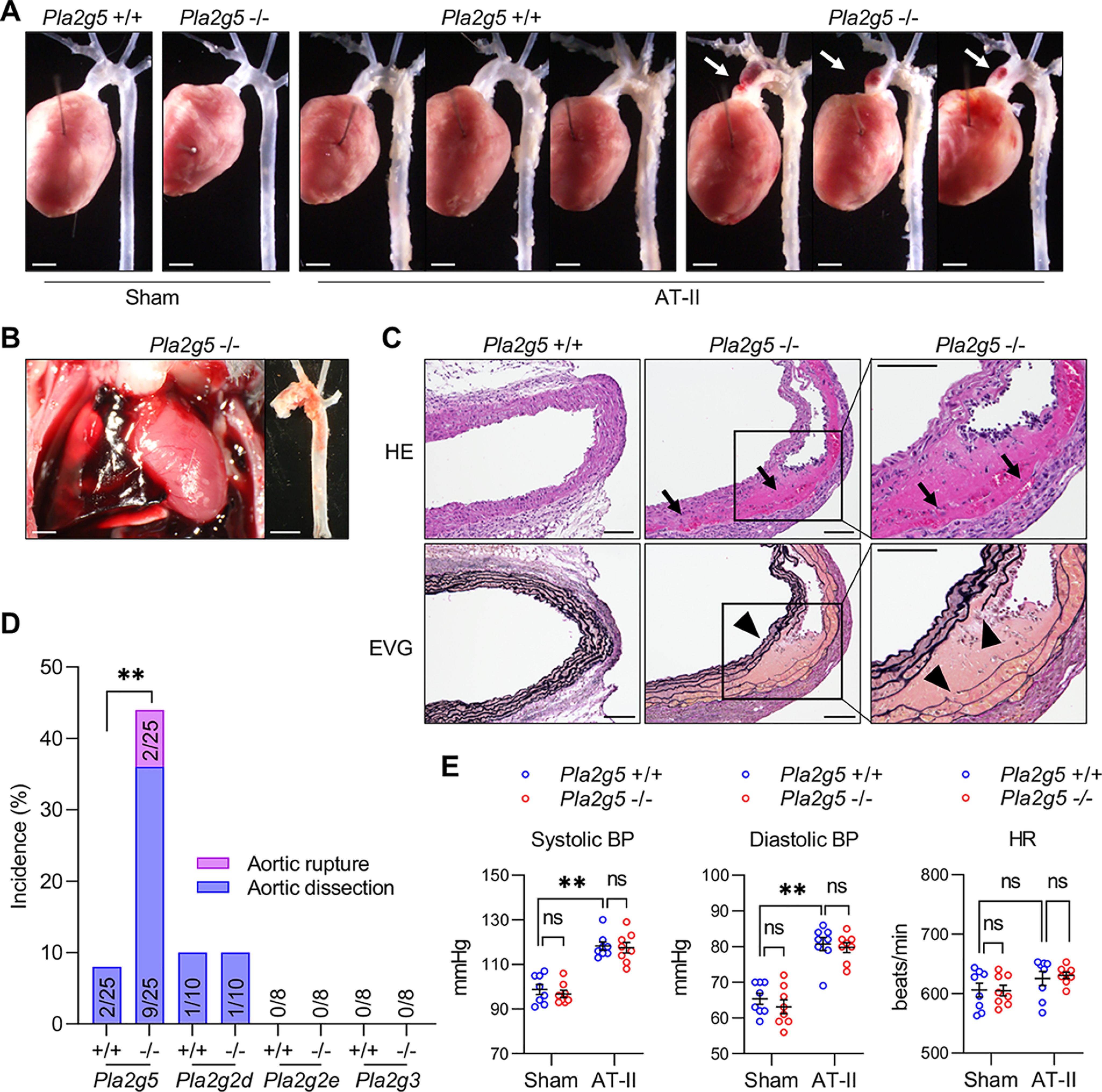Figure 2.

Increased AT-II-induced thoracic aortic dissection in Pla2g5−/− mice. A, representative thoracic aortas of Pla2g5+/+ and Pla2g5−/− mice after 7 days of AT-II infusion or sham control. Arrows indicate aortic dissection with intramural hematoma. Scale bars, 1 mm. B, representative intrathoracic hematoma and ruptured thoracic aorta of a Pla2g5−/− mouse after 3 days of AT-II infusion. Scale bars, 1 mm. C, representative sections of the thoracic aorta of Pla2g5+/+ and Pla2g5−/− mice stained with HE or EVG. Arrows indicate intramural hematoma, and arrowheads indicate dissection of the aortic wall accompanied by elastin fragmentation. Scale bars, 100 μm. Boxes are magnified on the right. D, incidence of thoracic aortic dissection or rupture in Pla2g5−/− (n = 25), Pla2g2d−/− (n = 10), Pla2g2e−/− (n = 8), Pla2g3−/− (n = 8), and littermate WT mice within 7 days of AT-II infusion. **, p < 0.01 by Fisher's exact test. E, systolic blood pressure (BP), diastolic blood pressure, and heart rate (HR) of Pla2g5+/+ and Pla2g5−/− mice with or without AT-II infusion for 2 days (n = 8). **, p < 0.01; ns, not significant by two-way ANOVA with Tukey's multiple-comparison test. Data are presented as mean ± S.E. of the indicated number (n) of biological replicates.
